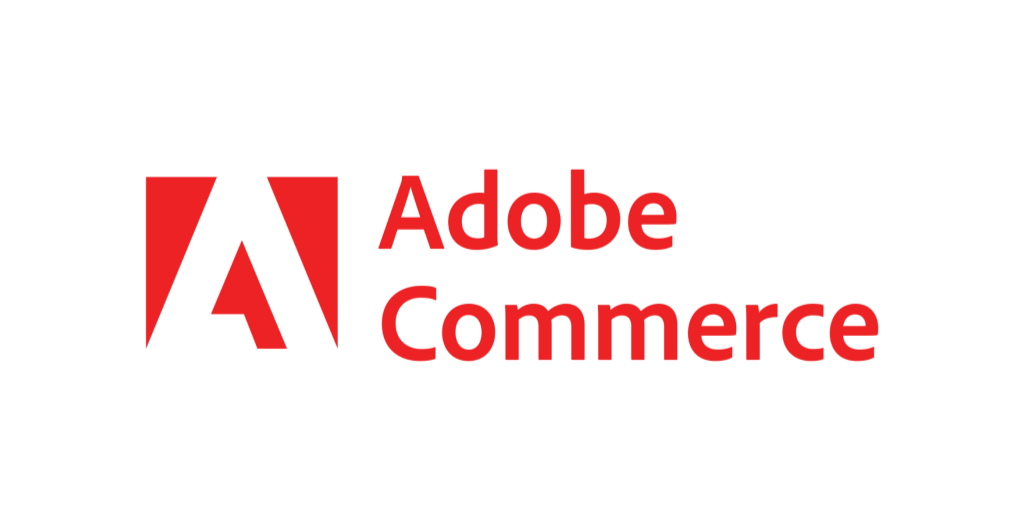Boosting Conversions in Adobe Commerce: Tactics For Success .
Boosting Adobe Commerce conversions starts with a smooth checkout, fast load times, and personalised shopping. With Hyvä Checkout, Hyvä Themes, and smart personalisation, you’ll turn more visitors into buyers. Make your store faster, friendlier, and ready to convert.
For Adobe Commerce stores, turning browsers into buyers is all about a seamless, enjoyable shopping experience. This guide covers proven ways to increase conversions on Adobe Commerce, from Hyvä Themes and Hyvä Checkout for performance to building trust with customers and personalising the journey. Let’s get into these strategies with practical steps to implement each on your site.

1. Optimised Checkout with Hyvä Checkout
The checkout is critical for conversions but it’s also where most customers drop off. By using Hyvä Checkout, a high-performance, streamlined checkout solution built for Adobe Commerce, you can improve this key part of the customer journey. Unlike Adobe Commerce’s default checkout, Hyvä Checkout is faster, more responsive and reduces load times and friction for customers to complete their purchase.
With Hyvä Checkout you can enable guest checkout, so first time customers can buy without registering. You can also create a modern, clean checkout flow that keeps customers focused by minimising distractions and simplifying forms. Add visual progress indicators to reassure customers, showing them each step of the way. Address autocomplete is also a must to reduce barriers to complete the checkout process.
What To Do:
- Install Hyvä Checkout: Set up Hyvä Checkout for a clean, fast and performance optimised checkout experience.
- Enable Guest Checkout: Allow customers to checkout without registering, with the option to create an account afterwards.
- Add Progress Indicators: Guide customers through the checkout process with a progress bar that shows each step they’re completing.
- Streamline Forms: Use Hyvä’s flexibility to remove unnecessary fields, keep only the essentials to speed up the checkout.
- Address Autocompletion: Ensure that an address autocomplete module is active on the checkout. Services such as Google places autocomplete, Fetchify or Loqate are all good options to achieve this. More info is available in the Hyvä checkout documentation.

2. Site Speed and Mobile Experience with Hyvä Themes
Page loading time is a major factor in whether visitors stay on or leave your store. Switching to Hyvä Themes can give you a huge performance boost to keep your customers happy. Hyvä Themes are built with clean, modern front-end code, no bloat that slows down other themes. This means faster load times, better responsiveness and overall a smoother experience – especially for mobile users who may be on slower connections.
It’s not just speed, Hyvä Themes also make development and customisation easier so there’s less overhead to keep the theme up to date. A faster, more mobile friendly site keeps customers engaged and increases the chances they’ll stay to complete the purchase.
What To Do:
- Switch to Hyvä Themes: Install and configure Hyvä Themes to optimise page load times and performance across all devices.
- Mobile Optimisation: Hyvä Themes are mobile ready, so check your mobile layout is easy to navigate and smooth.
- Use Lightweight, Web-Optimised Images: Compress images and switch to WebP for extra load time gains.
- Measure with PageSpeed Insights: Test your site pre and post-switch with Google PageSpeed Insights to see what else can be optimised.

3. Personalisation and Product Recommendations
Personalisation is a great way to increase engagement and conversions. Adobe Commerce’s AI features allow you to recommend products based on a customer’s browsing behaviour, purchase history or preferences, so the shopping experience feels tailored to each customer. By suggesting products that match their interests you encourage customers to add more to cart, increasing engagement and order value.
You can also use Adobe Commerce to show related or complementary products on key pages like product pages, cart and checkout. Offering add-ons or upsells adds value to the customer and increases the chance they’ll add more to cart.
What To Do:
- Enable Product Recommendations: Utilise Adobe Commerce’s AI based recommendations for product suggestions.
- Customise Product Placements: Display related products on product, cart and checkout pages.
- Review Analytics: Monitor how recommendations are performing and adjust settings as needed.
Dynamic content and offers let you target customers with specific offers based on their behaviour or segment. For example, offer a discount to first time buyers or show special deals to returning customers.
What To Do:
- Create Dynamic Rules: Use Adobe Commerce’s dynamic content to show personalised offers.
- Try Exclusive Deals: Show a discount for first time buyers or a loyalty offer for repeat customers.
- Monitor Performance: Track how personalised offers perform and adjust based on results.

4. Trust Signals Minimise Purchase Anxiety
Customers will convert more when they feel good about the brand and product. Trust is key as it makes customers feel secure and safe to buy.
One way to do this is to display customer reviews and ratings. Reviews are social proof, new customers will feel more confident when they see real feedback from previous buyers. Highlighting top rated products will encourage hesitant customers to complete the purchase.
What To Do:
- Collect Product Reviews: Consider using a review booster module to request reviews from past customers after purchase. Often this consists of automated emails that are sent 1-2 weeks after delivery.
- Highlight Reviews on Product Pages: Showcase your product reviews on the product pages.
- Show Top Rated Products: Feature highly rated products to build credibility and trust.
- Encourage Honest Feedback: Don’t filter out negative reviews; genuine feedback is more persuasive. Your users can spot when reviews are manipulated.
- Utilise Advanced Reviews Module: Use one of the many advanced modules out there to collect rich review data such as images, helpful review ratings, AI overviews etc.
Having a clear shipping/returns policy can also alleviate customer fears. If they know they shipping costs upfront and can return if they’re not satisfied they’ll be more likely to buy. Also show customers you are a reputable company by clearly displaying your company name, address, phone number, email address, company / vat number. This additional data will also boost your EEAT search engine optimisation efforts.
What To Do:
- Highlight Shipping Charges: Show your shipping charges early on in the buying process. The sooner the better. Displaying these on the product and cart pages is best.
- Display Your Return Policy: Show your return policy on product pages and during checkout.
- Business Info: Show customer support options if shoppers have questions. Clearly show all business information to show you are a legitimate business.

5. Exit-Intent Popups and Cart Recovery
Exit-intent popups and cart recovery are great ways to re-engage customers who are about to leave. An exit-intent popup can detect when a user is about to leave the site and show them a message with a discount or a reminder of items in their cart to complete the purchase.
For those who still leave, abandoned cart emails can help. A reminder email with images of the items left behind gives the customer a second chance to reconsider and often will get them to complete the purchase.
What To Do:
- Set up an Exit-Intent Popup: Configure a popup that appears when a user’s cursor moves towards the edge of the screen.
- Offer a Small Incentive: Use a discount or free shipping offer to stay.
- Cart Recovery Emails: Send reminders to customers who abandon carts, ideally with images of the items left behind.

6. Multiple Payment Options
Offering multiple payment options gives customers flexibility and reduces friction at checkout. Add widely used options like Credit/Debit Card, PayPal, Apple/Google Pay and Klarna to give customers the option they prefer, so they’re less likely to abandon the purchase because of limited options.
When offering credit/debit card options, it's best to find a solution (such as Stripe or Opayo) where you can embed a payment iframe onto your website. This lets you display the payment form directly in your checkout rather than bouncing your users offsite to complete payment. This helps to increase usability and develop trust to boost conversion rates.
What To Do:
- Add Popular Payment Methods: Enable Credit/Debit Cards, PayPal, Apple Pay, Google Pay and Klarna in the checkout.
- Show Security Badges: Display payment security seals to customers such as malware scan results or SSL badges.
- Test Each Payment Option: Test each option to make sure they work from start to finish.

7. A/B Testing and Data Analytics
A/B testing lets you test different layouts, CTAs and page elements to see what drives the most conversions. Testing different versions of product pages or checkout buttons will help you figure out what works best for your audience and optimise performance.
Adobe Analytics / Google Analytics 4 are key to understanding customer behaviour on your site. Track page views, drop-off points and conversions to see where customers are losing interest. Use this data to refine and improve your site layout and offerings.
What To Do:
- Set up A/B Tests: Test different CTA buttons, layouts and checkout processes to see what works best. Where some tests are more complex, you may opt for trialling these back to back rather than simultaneously.
- Analyse Drop-Off Points: Where are customers leaving the site and adjust those areas.
- Use Tracking Tools: Tools like Hotjar or Microsoft Clarity will show you where users click, scroll or stop on key pages.
By using these techniques and Hyvä Checkout, Hyvä Themes and Adobe Commerce’s built-in features your eCommerce store will be faster, more personal and more compelling. These methods will also reduce friction, increase engagement and conversion rates.
Would you like to optimise your Adobe Commerce site? Check out our support services or get in touch to discuss your requirements in more detail!

Latest Posts
Everything you need to become a successful eCommerce developer
Adobe has recently launched Magento 2.4.6, the most advanced version of the Magento Commerce and Open Source platform,...
Read the full blogEverything You Need to Know About the Magento 2.4.6 Update.
The day to day life of being a eCommerce developer and what it entails.
Read the full blogA Deep Dive into Magento’s Release Schedule
Dive into the heart of the Magento release schedule overhaul, uncovering its monumental shift and direct benefits for...
Read the full blog






